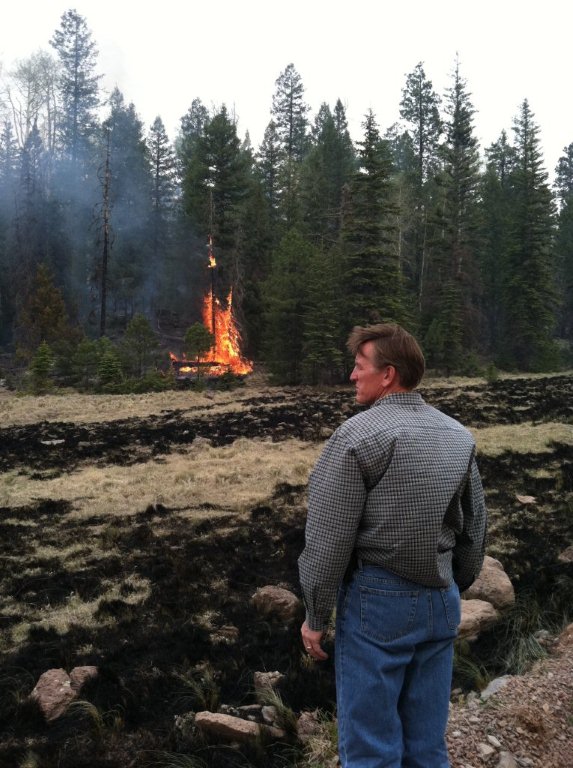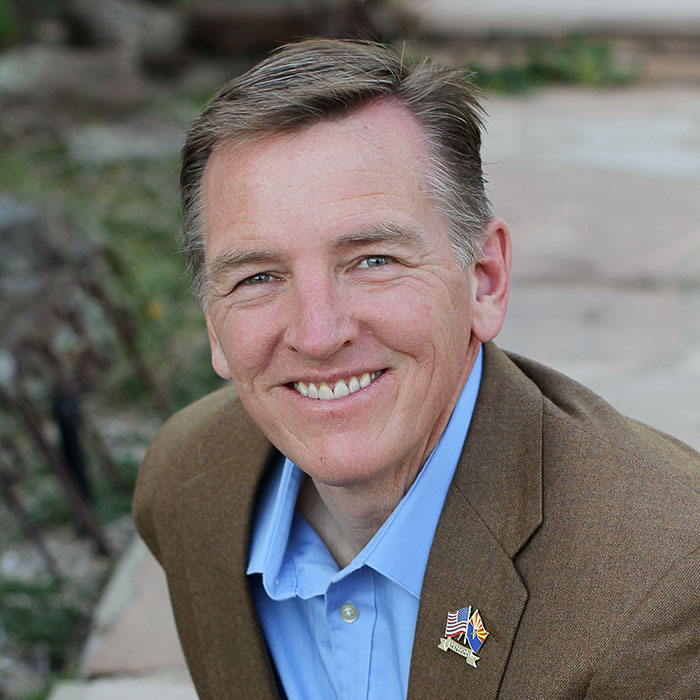Our forests and natural resources are a way of life in Arizona. Rural Arizona is home to over nine million acres of United States Forest Service administered land, including much of Apache-Sitgreaves, Coconino, Coronado, Kaibab, Prescott, and Tonto National Forests.
These ecosystems are suffocating under too many trees. Where we once had 10 to 25 trees per acre, we now have hundreds. These conditions have increased wildfire conditions. The frequency of fires, and the magnitude of the acreage burned, has exponentially increased since 1990. The five largest wildfires, Rodeo-Chediski in 2002, Cave Creek Complex in 2005, Willow in 2004, Horeshoe Two Fire in 2001 and the Wallow Fire in 2011 all occurred within the last two decades. Prior to 1990, the largest fire was the Carrizo fire in 1970 which burned just 57,000 acres.
I will never forget the Yarnell Fire of 2013 which claimed the lives of 19 elite Granite Mountain Hotshot firefighters. The Yarnell Fire began when lightning struck approximately 30 miles southwest of Prescott, Arizona off Highway 89 on June 28, 2013. The blaze burned approximately 8,400 acres and damaged more that a 1,000 structures over a fifteen day period. During the disaster, nineteen firefighters from the Granite Mountain Interagency Hotshot Crew lost their lives battling fire, the sixth deadliest American firefighter disaster overall and the deadliest wildfire ever in Arizona. I hosted a public memorial that more than 1,200 members of the community attended, with at least 200 listening outside the venue. All of these brave men were taken from us much too young. Let us never forget their sacrifice.
Our forests have been mismanaged for a long time and it is way past due that we change our strategy. As your Congressman, I have been fighting for proactive, solutions oriented, and fiscally sustainable policies that restore the environment, improve public safety, and put people back to work in our forests.

Catastrophic wildfires are a significant threat to wildlife, watersheds and communities throughout the West. 2018 was one of the worst wildfire seasons on record. More than 58,000 fires burned more than 8.8 million acres. Over the last few years, the Forest Service has spent record amounts of money on suppressions, more than $2.5 billion in 2017 alone. Last year, the Carr and Camp Fires in Northern California destroyed almost 30,000 structures and caused between $9.5 million-$12 million in damage.
Between 60 and 80 million acres of our National Forest System are considered high risk and in need of treatment to address forest health challenges such as fire, insect mortality, and invasive species. Most of this land is located within Western states. It is absurd that we allow our forests to become powder kegs that invite bigger and hotter fires every summer. It isn’t a matter of if our beautiful nation’s forests are going to burn—it is only a matter of when.
It does not have to be this way. The biggest hindrance is the U.S. Forest Service bureaucracy in Washington and extreme special-interest groups that stop responsible forest management activities. Because the Forest Service refuses to permit hazardous fuel management projects in our forests, they are overcrowded with trees that go up in flames during droughts, and invite massive conflagrations. It would be far easier to thin the forest conscientiously in advance than resort to emergency fire suppression, which risks lives and property.
It is of the utmost urgency that the federal government adopt a forward-thinking, active management strategy that combats dangerous wildfires before they get started.
Thinning overgrown forests and removing hazardous fuels will create jobs and increase overall forest health. Unfortunately, extremist environmentalists fail to comprehend this fact and hold up important forest health management projects that would actually help reduce greenhouse gas emissions and benefit the environment.
The Forest Service has been maxing out its suppression account each year and has been forced to raid its forest management and other accounts in order to put out fires. They’ve had to use resources designed to prevent forest fires in order to put them out. This merry-go-round practice is called “fire borrowing,” and it has dramatically exacerbated the problem of catastrophic wildfires. In fact, eight times in the last twelve years, the Forest Service has moved funds from other operating accounts to fight fire, depleting accounts for forest management in the process.
This classic example of Washington misprioritization is extremely misguided. The Forest Service’s own Fuel Treatment Effective Database reports that “over 90 percent of the fuel treatments were effective in changing fire behavior and/or helping with control of the wildfire.” Unfortunately, federal land management agencies have failed to recognize this correlation and timber harvests are down 80 percent over the last 30 years. Such flawed thinking also negatively impacts education and local communities as historically 25 percent of the receipts from all timber harvested by the federal government go toward schools and important infrastructure projects.
Special-interest groups claim that we must lock up our forests, and tie the hands of local Forest Service administrators by threatening lawsuits every time a responsible forest management policy is proposed. In fact, litigation and other challenges have caused a significant reduction in active saw mills nationwide, from 1,311 in 1995 to just over 200 today. These litigants have also exacerbated significant destruction of our forests and private dwellings as the environmental degradation these groups claim to want to avoid occurs on a massive scale through air pollution, water contamination, and destruction of species habitat. Robust data from NASA has concluded that one catastrophic wildfire can emit more carbon emissions in a few days than total vehicle emissions in an entire state over the course of a year.

